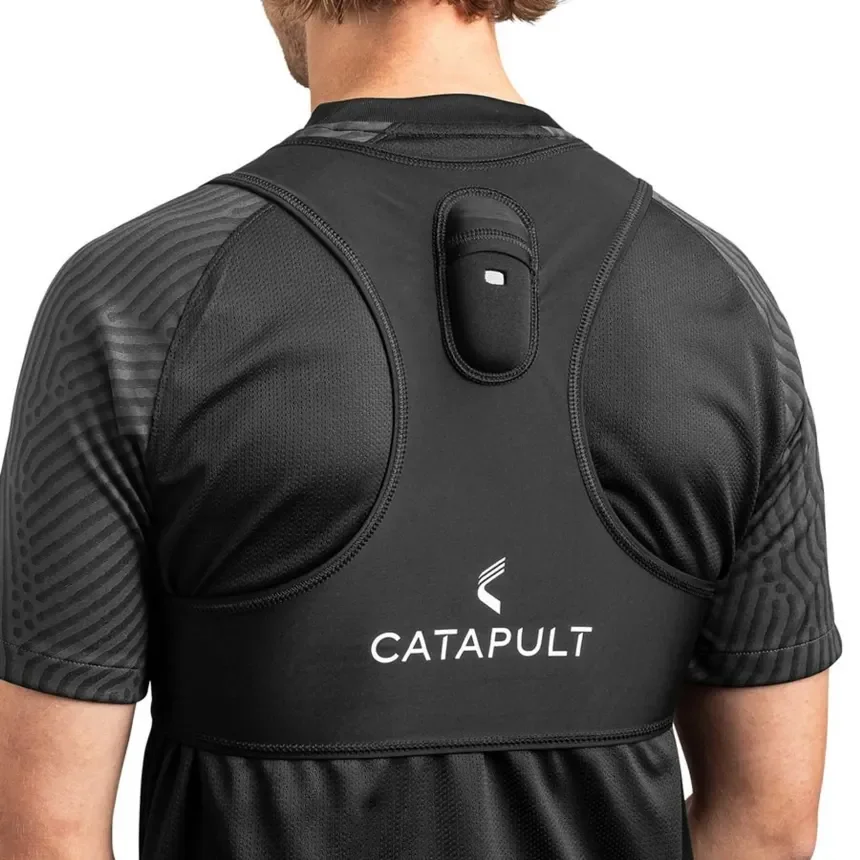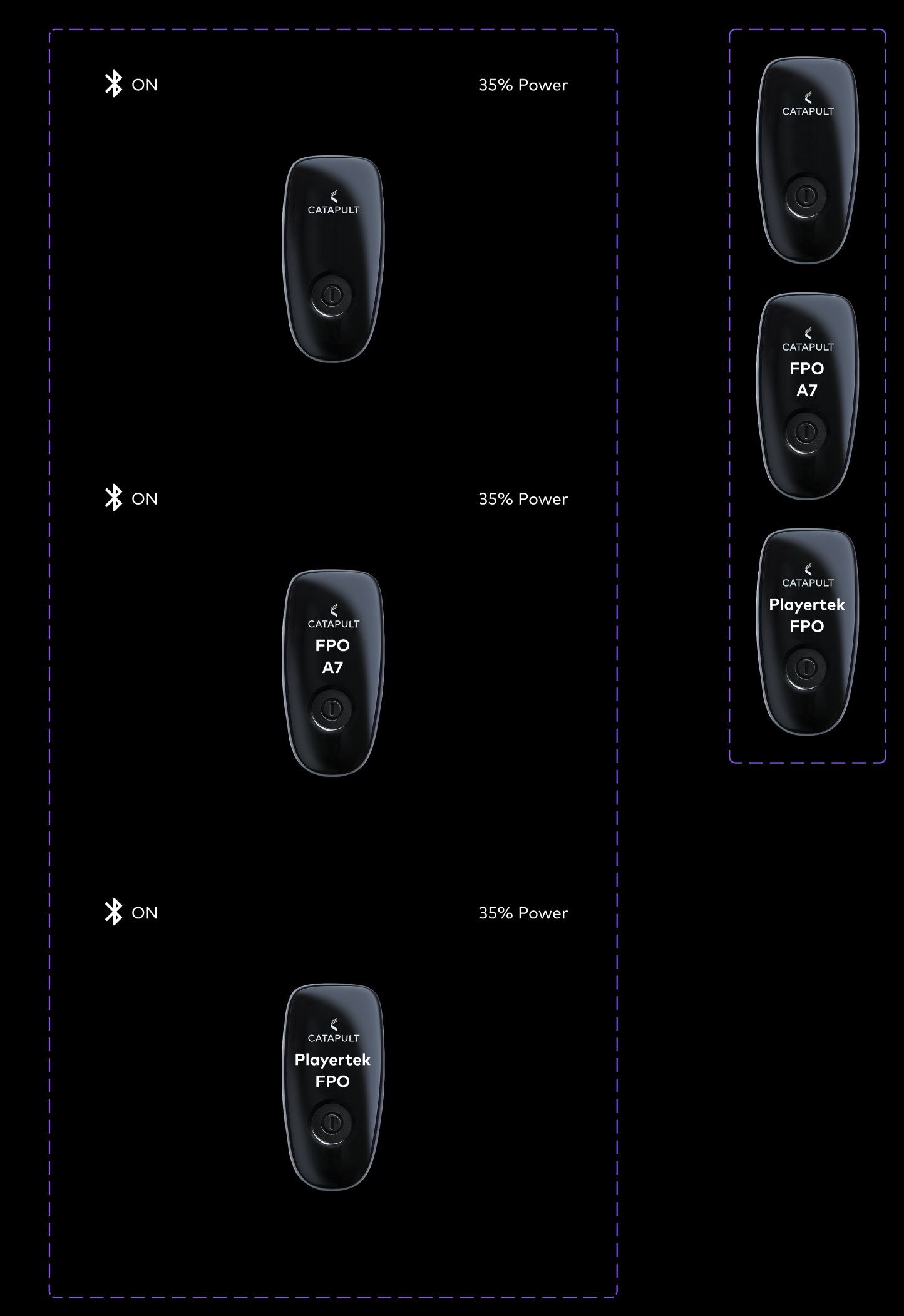Training athletes, not data scientists
An ambitious project to design the Catapult One (C1) player experience helping amateur athletes understand their data as they aspire to become professional sports players in their field.
Where do I fit in?
As a UX designer just new to the company, I served as the connective tissue between user needs, business goals, and technical feasibility. My role is to ensure that every design decision for catapult one is grounded in research, empathy, clarity, usability and sustainability.
TL;DR Design the product and make sure people are happy with it!
What is “Catapult One”
Catapult One is a sports performance tracking system designed for individual athletes and coaches, especially in team sports like soccer, American football, rugby, and lacrosse. It brings elite-level analytics—once reserved for pro teams—into the hands of everyday players.
GPS Tracking Pod & Vest: Athletes wear a FIFA-approved pod and vest to capture movement data during training or matches.
Performance Metrics: Tracks key stats like total distance, sprint distance, top speed, and intensity to help players improve.
Heatmaps & Positioning: Visualizes player movement to analyze field coverage and tactical positioning.
Training Plans: Offers curated workouts and recovery tips from top-tier coaches.
Progress Analysis: Lets users benchmark against personal bests and monitor trends over time.
TLDR; When you play your sport you get numbers and graphs
🛠️ Project timeline & Workflow: “C1 Design”
I mapped out this double diamond diagram for the C1 team across two key phases: Discovery and Production to communicate to our stakeholders the original ask and the impact design was going to make. Double diamond provided us with enough structure and flexibility to give us direction and make adjustments as needed. I have used this model in the past and use it when there is a vacuum on design direction. Very useful to use in a pinch!
📅 The C1 timeline
September + October: Discovery (Early-stage research and concepting)
November + December: Finalization, approvals, and dev sprint execution
We had a tight timeline to turn this around by the end of the year as products were scheduled to hit storeshelves in January the following year. Understanding this there was not much wiggle room to spread out the work. We had to work methodically on what could be accomplished in the short term to yielding long term accomplishments.
🔄 Double diamond by the book
We had a short timeline to complete this product so had to use Double diamond off the shelf (and it worked great!)
Research kickoff – Initial discovery and user research (interviewing athletes)
Team alignment – Syncing design goals with collaborators shareholders (my bosses boss 😎)
Design kickoff – Level setting with the business on what our design was going to bring (AKA C1’s design requirements drafting)
Stakeholder approvals – Go or no-go on the proposed designs to send to dev to actually build C1
??? - Getting the work done! 🛠️
Delivery – what we set out to accomplished and brigning it together on time
👥 Team Involvement
Early Phase (Sep–Oct): Drew M., John S., Mary M.
Later Phase (Nov–Dec): Expanded team including Casey D., Chris S., Chris M., McCormick D., Ruth S.
🔭 C1 discovery
We had a clear understanding from the business about what they wanted and we had a tech demo of the C1 wearable device and the data points it captured
1. Athlete’s in context
Understand the athlete’s lifestyle
2. Solutions brainstorming
Bring findings into how we can accomodate users based on their behaviors
3. Shared vision (users & stakeholders)
Work with stakeholders on a vision between design and the business on the best possible experience for the users.
🎨 Scaling new design system
Mobile first
Much of our design system had been created for in house B2B products that sports scientists used for coaching and tactical applications. The challenge was expanding this system so that we could accomodate a mobile first B2C products for iOS and Android. React native allows us plenty of affordances to move code for mobile. Since the design system was young it rested on the ability to port desktop first components.
New devices, new states
One of the key experiences in C1 was the support for new and legacy devices. As part of this we had to capture multiple states for the devices when they were in use on the product
New support for sports modes & scheduling
As devices were capable of supporting multi sports modes we had to adjust our navigation to support a broader range of activities for different athletes
Leaderboards for social interaction
This feature required the creation of a ranking system for athletes much like ‘local legends’ on other popular workout activity apps to help appeal to athletes that wanted and extra dose of competition with their teammates.
🚚 Export and developer collaboration
Design ops (sprint engagement)
Mts.
🪄 The finishing touch
Storefronts
Much of our design system had been created for in house B2B products that sports scientists used for coaching and tactical applications. The challenge was expanding this system so that we could accomodate a mobile first B2C products for iOS and Android. React native allows us plenty of affordances to move code for mobile. Since the design system was young it rested on the ability to port desktop first components.






